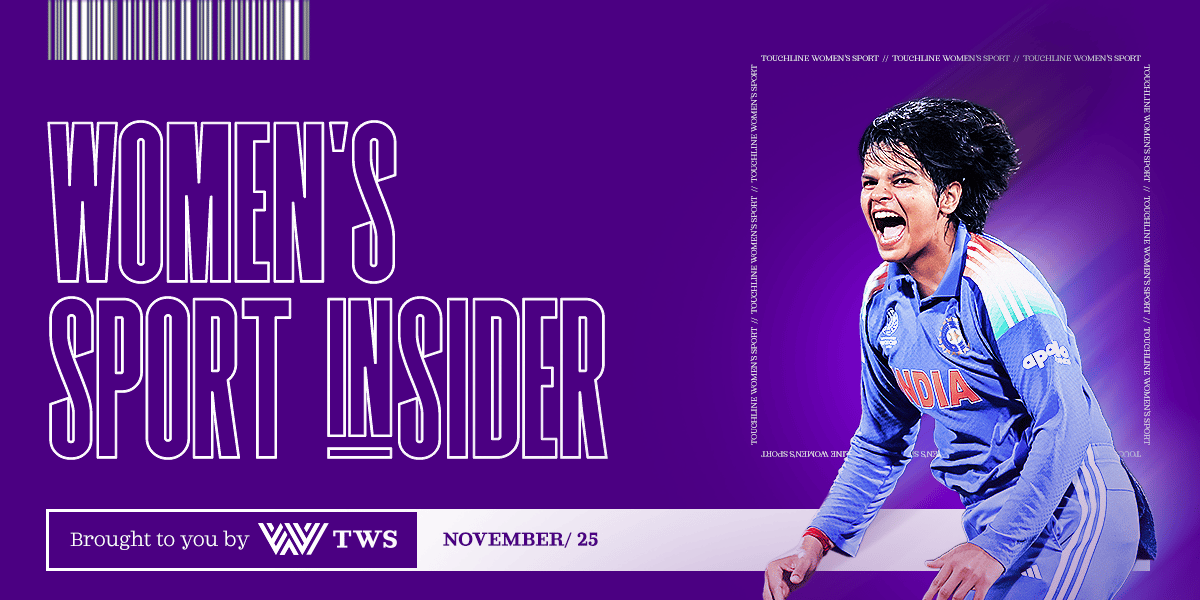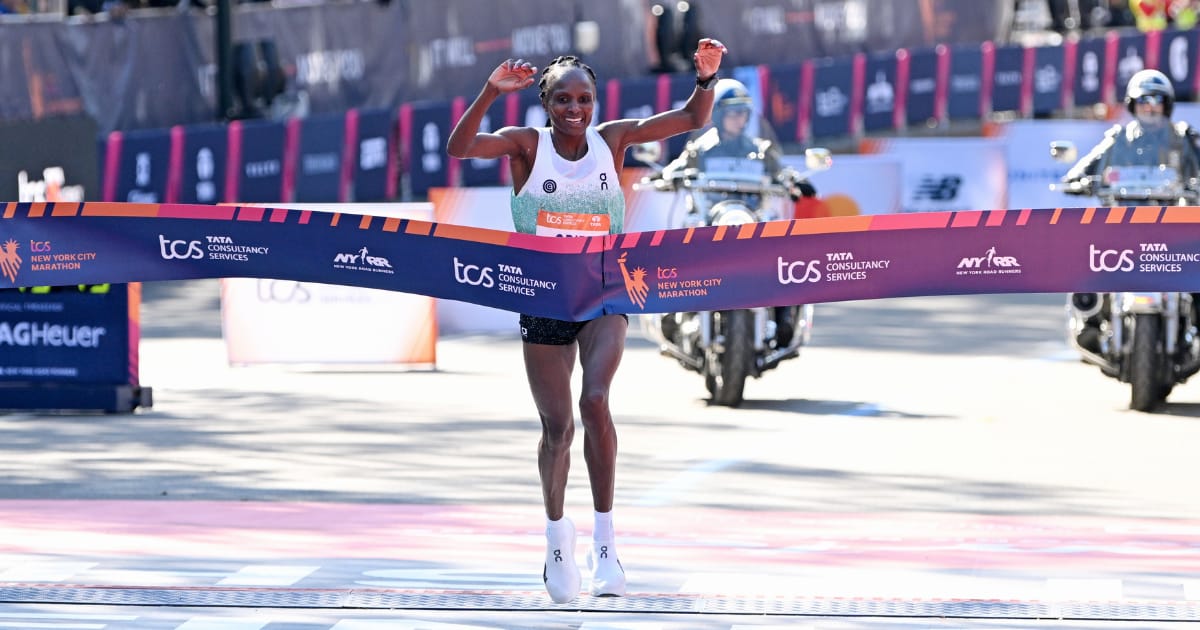- Women's Sport Insider
- Posts
- India’s historic World Cup win: The key to retaining new women's sport fans
India’s historic World Cup win: The key to retaining new women's sport fans

Welcome to the sixth edition of Women’s Sport Insider!
I'm Molly McElwee, a sports journalist and author, holding the fort for Nancy this month.
After India’s headline-grabbing win in the Women’s World Cup, which drew in an audience of more than 300 million, I got thinking about how best cricket can ride this wave of momentum.
Helpfully, the Women’s Sport Trust visibility report was also released in the last fortnight, and offered some timely insights on audience figures and fan trends across the industry, which could help inform cricket’s next steps.
As well as that, this newsletter will spotlight developments across the past month of women's sport in our regular Top of the Table and Winning Women sections.
India’s historic World Cup win: The key to retaining new women's sport fans

India celebrate their World Cup win ©PUNIT PARANJPE/AFP via Getty Images
India’s history-making win in the World Cup is being called a seminal moment for women’s cricket. In a sport which has been dominated by England and Australia, for India to triumph would have been significant all on its own. But for them to do so in front of a home crowd in Navi Mumbai could (with the right sustainable investment) change the sport forever.
Hundreds of millions tuned in to watch the final across India and the knock-on effect is already being felt on the other side of the world too.
On Monday it was announced that, in the last week, there was a whopping 171% increase in ticket sales for next summer’s Women’s T20 World Cup, which is being held in England and Wales. For India’s fixtures specifically, there has been a 265% spike. That is a tangible example of how a sporting result can influence fans and consumers with near-instant effect.
Turning that post-tournament bounce into sustained engagement will be the job of rights holders and teams in India and across cricket, who can provide the investment needed to both support talent and keep new fans interested.
On the latter point the key may lie in spotlighting the stars of the sport — the athletes themselves — especially across social media. The evidence continues to indicate it is the most effective way to entice young, female fans to sport.
A fortnight ago the Women’s Sport Trust (WST) provided its latest report on the visibility of women’s sport across the first nine months of the year, including a jam-packed summer.
It was good news across the board, as women’s sport reached record female audiences in the UK, including for the UEFA Women’s EURO 2025 and Rugby World Cup (RWC) 2025. Both tournaments showed women making up a record share of the broadcast audience, and total viewing hours for women’s sport from January to September reached 357 million hours — another record high.
One specific part of the report caught my eye, namely the insight about how fans are reaching women’s sport. While broadcast audiences for women’s global tournaments skew older than for men’s tournaments (70% who watched the RWC were over 55, while for the Women’s EURO it was 60%), the report found that younger audiences are instead drawn to women’s sport via the individual stars of the game on social media.
That should be no huge surprise, but the numbers are still compelling. For example, 15% of the RWC 2025 and 12% of the Women’s EURO 2025 official Instagram account audiences were women and girls aged 13 to 34, while that demographic accounted for 19% of the official Lionesses account. But on Leah Williamson’s Instagram that number bumped up to 32%, on Ella Toone’s it was 30% and Ilona Maher’s was even higher at 41%.

Ilona Maher greeting fans at the Rugby World Cup ©Molly Darlington/World Rugby via Getty Images
This insight is a reminder that top athletes not only often have larger audiences but also reach different demographics than their teams or the organisations that run the sport. It also confirms that young women and girls are actively drawn to sports content and coverage through the sportswomen they look up to, rather than through official channels of the sport itself.
USA Rugby’s Maher is the supreme example. Her TikTok account received 64 million views during the RWC 2025. By comparison England Rugby, which had the highest engagement of any of the teams in the tournament, received 16.1m.
Maher and fellow top sportswomen appeal to young women online because they are digital natives just like them. Their content can be timely, authentic and funny, it often coincides with and overlaps with culture and fashion, and it lifts the lid on their life off the pitch.
That doesn’t mean that leagues and organisations shouldn’t try to draw this audience in themselves. Many are making significant efforts to do so by upping their investment in the channels where Gen Z audiences reside.
The WST report found a 71% increase in video uploads to TikTok by women’s sport properties, including UEFA, the WNBA, WTA and Barclays WSL. The increases across Instagram (60%) and YouTube (51%) were further signs of the commitment to the video content which is popular among young women online. Organisations recognise how these fans are keen to see their favourite athletes on the apps they are already using and crave content that shows them in off-field settings, behind the scenes or sharing more of their personalities.
This year’s RWC gained 1.1 billion social impressions on owned channels, and women made up two thirds of all new followers across Instagram and TikTok during the tournament. The BBC also reported more than 54 million views on their women’s football TikTok account during the UEFA Women’s EURO, and 76% of their audience were under-34s. So while linear broadcasts of matches attracted a majority older audience, there is still a way to get Gen Z and younger Millennials actively engaging in women’s sport coverage on non-athlete accounts.
The wider picture
Away from the WST report, there’s further evidence that there remains more that can be done to cater for female women’s sport fans.
Wasserman’s The Collective published its own report in September, which found that two thirds of women believe women’s sports leagues fall short of appealing to them as fans. Among Gen Z-ers, 53% said the lack of attention paid to women fans has made them less likely to engage with sports. That gap needs filling if women’s sport executives want to appeal to all age ranges.
The good news is that the same report found that nearly 60% of women they surveyed have consciously purchased from a sponsor of their favourite team. If they feel seen and invested in a team or sport, women sports fans are intentional in the way they engage with and spend their money around their fandom. That means there is a huge opportunity for rights holders, brands and teams to tap into; they just need to properly understand how to speak to women sports fans in an authentic way.

Shafali Verma has been the breakout star of India’s tournament ©Getty Images
Looking ahead for women’s cricket, that could mean spotlighting talent like Shafali Verma. She was the player of the match in India’s World Cup final win, but as a child had to cut her hair and pretend to be a boy because her father couldn’t find a single academy that would accept a girl playing cricket in her area.
Last week Verma held the World Cup trophy aloft to a full stadium of adoring fans. More than 900,000 people liked her Instagram photo of the moment. The lessons gained from women’s football and rugby in particular suggest that cricket must learn to speak directly to those new fans in order to keep them.

DFB PROPOSES LANDMARK INVESTMENTThe German Football Association (DFB) formally green-lighted plans to provide €100 million of investment into the Women’s Bundesliga. From 2026 the league will operate as an independent entity and, through this funding, the DFB aims to help spur the league towards becoming fully professionalised and able to retain top talent. | NO STOPPING VENUS WILLIAMSNews dropped last week that 45-year-old Venus Williams intends to play the ASB Classic in Auckland, New Zealand in January. It means 2026 will mark Williams’s 33rd consecutive season on tour, a remarkable feat of longevity. The seven-time major singles champion made her tour debut in 1994, and has played at least two WTA events every year since. |

HELLEN OBIRI Kenya’s Hellen Obiri topped the podium at the NYC Marathon earlier this month, and did so by obliterating the 22-year-old course record. Her time of 2 hours, 19 minutes and 51 seconds was more than two-and-a-half minutes quicker than the previous fastest time, which was set way back in 2003 by Margaret Okayo. | ELENA RYBAKINA Elena Rybakina caused a big upset at the WTA Finals, after defeating world No. 1 Aryna Sabalenka in the championship match. Rybakina was the last player to qualify for the year-end event, but achieved a flawless sweep in Riyadh, winning all five of her matches. She was rewarded with the maximum prize money possible, taking home $5.2million — the biggest payday in women’s tennis history. |
Reply